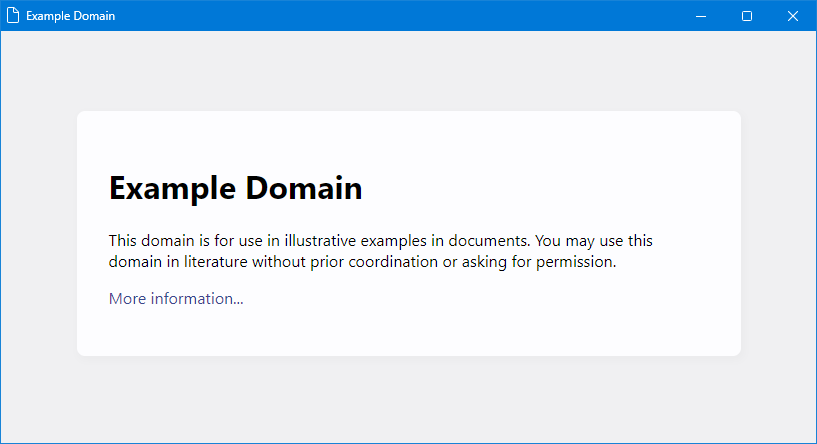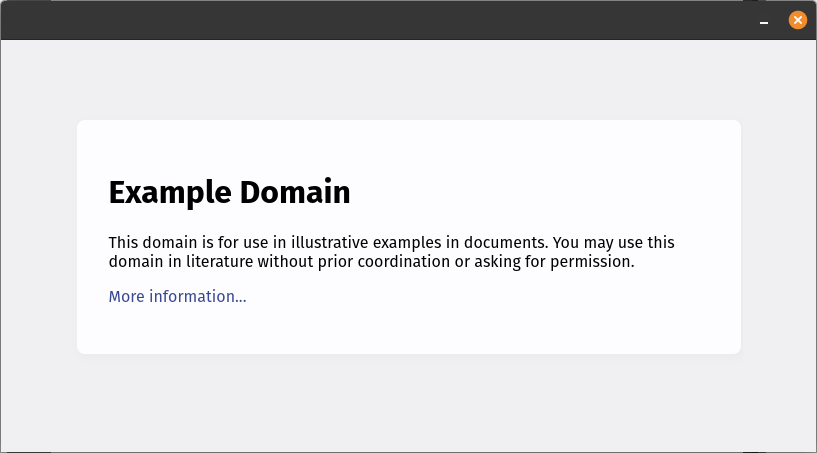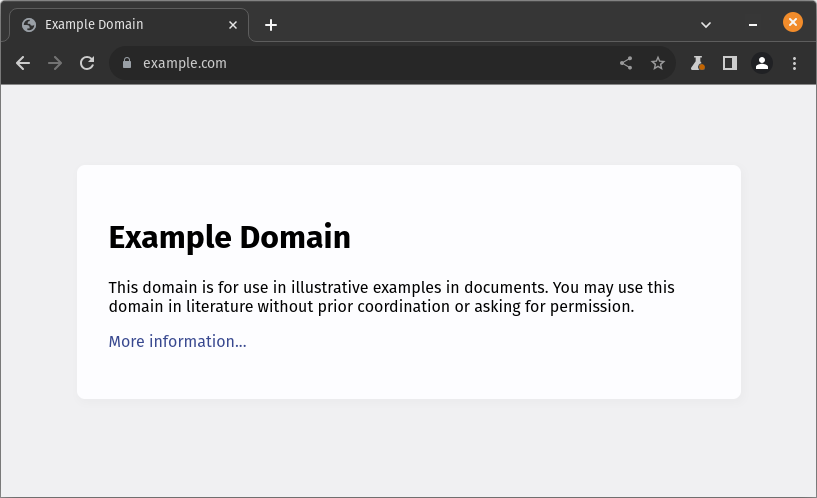Native web apps without Electron
In the last few years, web technologies have evolved at a fast and steady pace, and developers have started to like web-based interface more and more.
Electron-based application look and feel like native applications, but behind the curtains there’s a custom version of Chromium, the open-source version of Google Chrome, rendering a web page.
Developers have started to build applications with Electron, thus being able to use familiar web technologies such as HTML5, CSS and JavaScript (or maybe TypeScript), as well as their trusted frameworks such as React (my personal favourite), Vue or Angular.
Using Electron to build user interfaces not only has the huge benefit of letting developers code with their favourite tools, but also makes it very easy to share the majority of the code when maintaining both a native app and a web app accessible through a web browser, and since Electron is cross-platform, it’s usually possible to just write code once, building for all major operating systems from a single codebase.
Fun fact: Visual Studio Code is actually an Electron application.
Ah yes, you can also run Visual Studio Code in your browser. Neat!
Unfortunately, there are also a few drawbacks. The main issue with Electron is that, being closely related to Google Chrome, it consumes quite a lot of RAM. Another issue is that each app release includes a copy of Electron, which again, is basically a custom version of Google Chrome, thus taking up quite a bit of disk space.
Some alternatives emerged, such as Tauri, which still lets developers write code with familiar web technologies, but bundling only what is necessary to render a user interface instead of an entire web browser, and relying on the low-level libraries that the operating system provides.
The idea
So, expanding on Tauri’s idea I was thinking… why bundling anything at all? Almost all computers already have a web browser installed, what’s the point of including it in every deployment? Wouldn’t it be possible to just develop our applications using web technologies, and then let the user’s web browser draw the interface, while still looking like a native application? If this was possible, we would be able to get all the benefits, while still mitigating the drawbacks.
I am certainly not the first to have this idea, but I still want to explore it in this blog post. The end goal is to build a minimal “to do list” application using web technologies, which must look and feel like a native application, and should not include any layout engine or JavaScript interpreter.
Experimenting
Chromium
So… let’s assume the user has a Chromium-based browser installed, such as Google Chrome, Microsoft Edge, Brave, Opera, Vivaldi, or Epic.
On modern Windows installations Microsoft Edge is pre-installed, so we can expect to always find at least one Chromium-based browser on this platform.
How can we open a web page in a Chromium-based browser such as Microsoft Edge, while making it appear like a native application?
1
msedge --new-window --app=https://example.com
And what does it look like on Windows 10?
Not too bad. This looks pretty much like a regular window from a native app.
Unfortunately this doesn’t fully work as expected. Running a Chromium-based browser like this will include all custom user settings and extensions, and this might interfere with our interface.
Fortunately, the solution is quite straightforward. Chromium-based browsers allow specifying a path to store settings separately from the main installation.
Let’s try running the following command from a Windows 10 command prompt:
1
msedge --new-window --app=https://example.com --user-data-dir="%AppData%/MyAppTest/profile-msedge"
This command will create a new a separate profile and store it in “%AppData%/MyAppTest/profile-msedge”.
Great! This should be enough for Windows users.
Firefox
Non-Windows users might not have a Chromium-based browser installed, but I would assume most Linux users either have a Chromium-based browser or Firefox installed.
How can we open a web page in Firefox, while making it appear like a native application?
Unfortunately it’s not as simple as with Chromium-based browsers, we have to work a little harder to alter some of Firefox’s default settings.
Let’s create the template for a Firefox profile, with a prefs.js file to customize Firefox’s behaviour, and a userChrome.css file to customize Firefox’s appearance by running the following commands from a Linux terminal:
1
2
3
4
5
6
7
8
9
10
11
12
13
14
mkdir -p "$HOME/.my-app-test/profile-firefox"
cat <<EOF > "$HOME/.my-app-test/profile-firefox/prefs.js"
user_pref("browser.shell.checkDefaultBrowser", false);
user_pref("browser.tabs.warnOnClose", false);
user_pref("toolkit.legacyUserProfileCustomizations.stylesheets", true);
EOF
mkdir -p "$HOME/.my-app-test/profile-firefox/chrome"
cat <<EOF > "$HOME/.my-app-test/profile-firefox/chrome/userChrome.css"
#toolbar-menubar { height: 38px !important; }
#TabsToolbar { display: none; }
#menubar-items { display: none; }
#nav-bar { visibility: collapse; }
EOF
We can now run Firefox with the following command:
1
firefox -profile "$HOME/.my-app-test/profile-firefox" -no-remote -url "https://example.com"
And what does it look like?
It definitely still needs some polishing, as the window’s title is not visible and there are some other small issues. Still, it’s a decent starting point!
Safari
Some Mac users might only have Safari installed.
How can we open a web page in Safari, while making it appear like a native application?
Unfortunately I don’t have a Mac, so this question will have to remain unanswered for now.
Others
What if we are on another exotic installation, such as on a low-power device such as a Raspberry Pi Zero, which comes with Midori as the default web browser?
For this and all other special cases we can still launch the default browser without any special directives, it will not appear like a native application, but it is guaranteed to always work as long as there is any web browser installed.
On Linux, for instance, we can use the following command:
1
xdg-open "https://example.com"
Unfortunately there’s nothing interesting to see here, the app will open in the default browser, and therefore it will not be characterized by the distinctive look of a native app.
Still, at least the user will be able to see something and interact with the app even on systems where the interface has never been tested.
Proof of Concept
Now that we know what is possible, it’s time to build a small “to do list” app in React, and bundle it into a native executable server app written in .NET 8.0. I will probably attempt to do this in the future.
TODO: perhaps someday…
System Theme
It would be nice to use the operating system’s theme to style components such as input fields, buttons, checkboxes, etc… I’m still not sure this is entirely possible, but perhaps I will give it a try in the future.
TODO: perhaps someday…
Extras
Thank you very much for taking the time to read my article, I hope you liked it!
If you found this experiment interesting, you might want to check out WebUI, a little C library to do something very similar to what we explored here.


